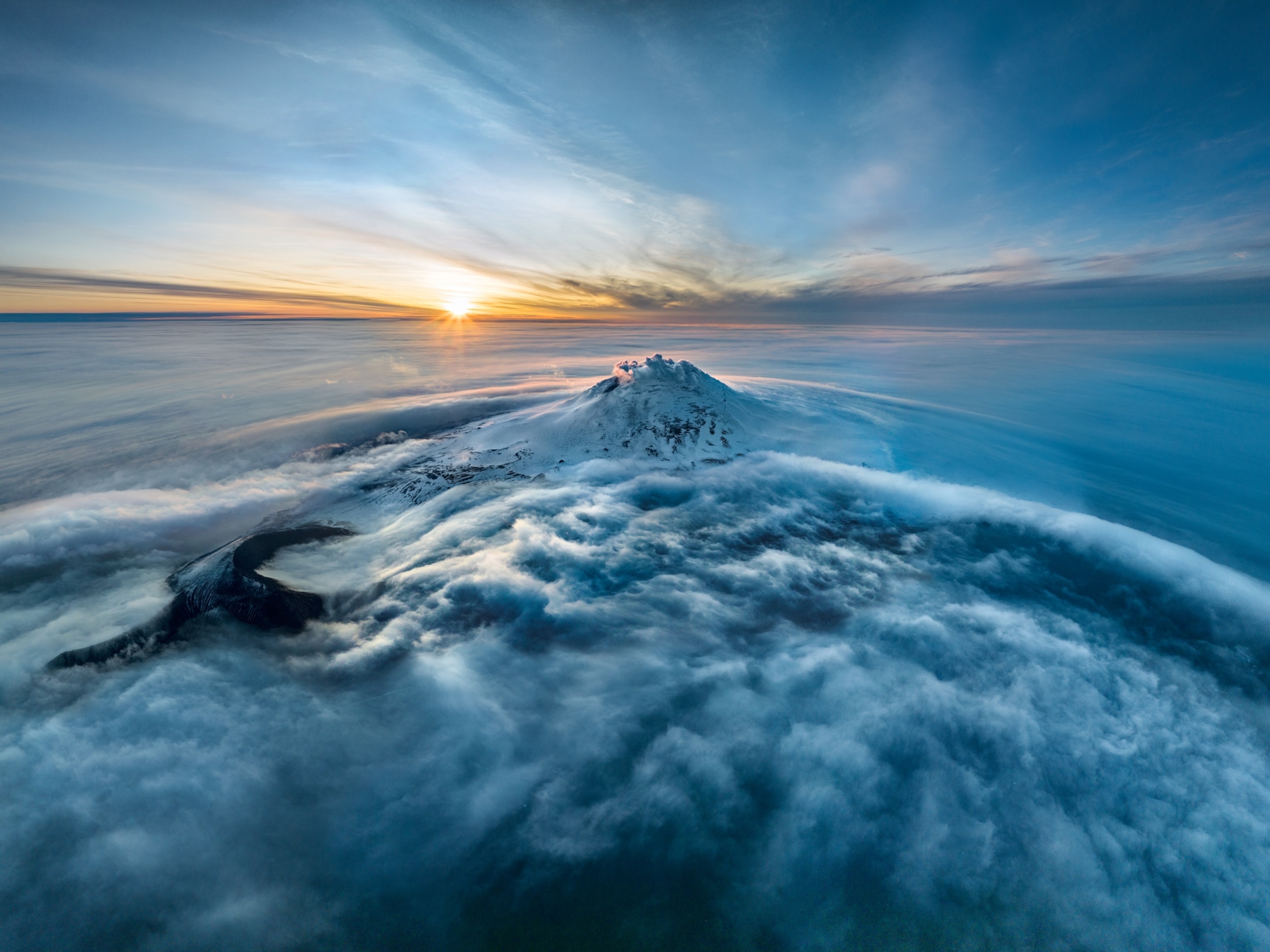

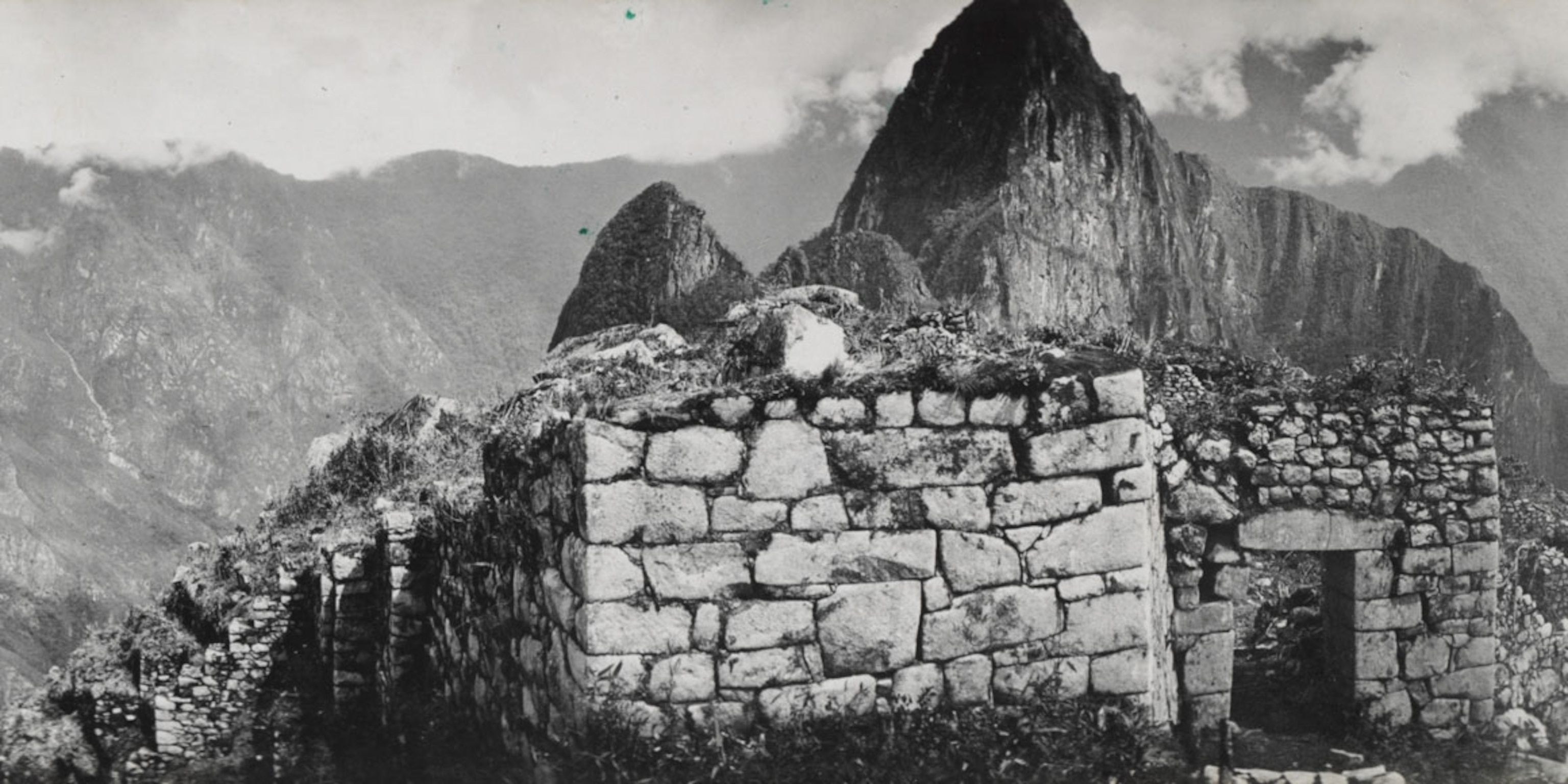
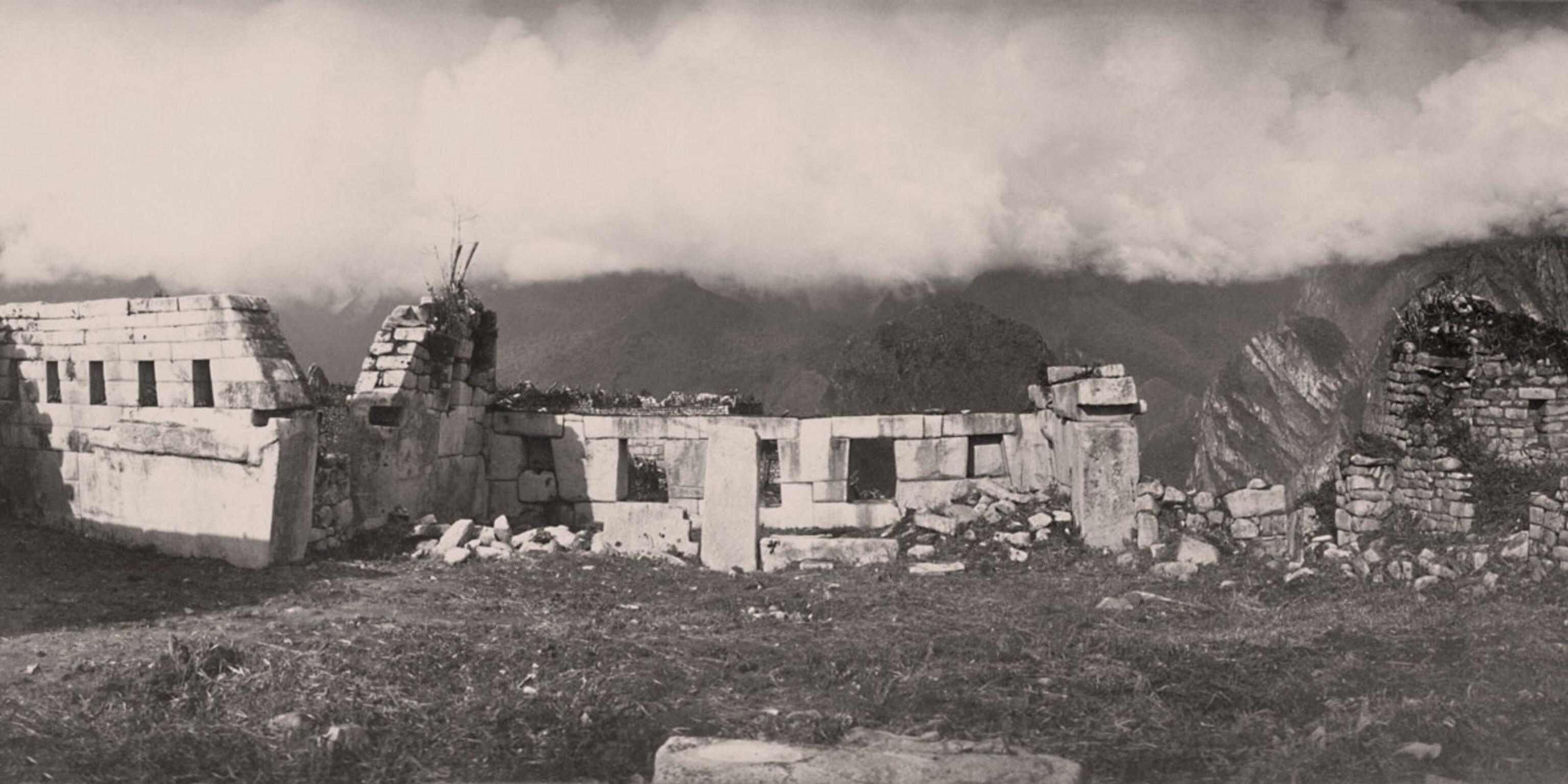
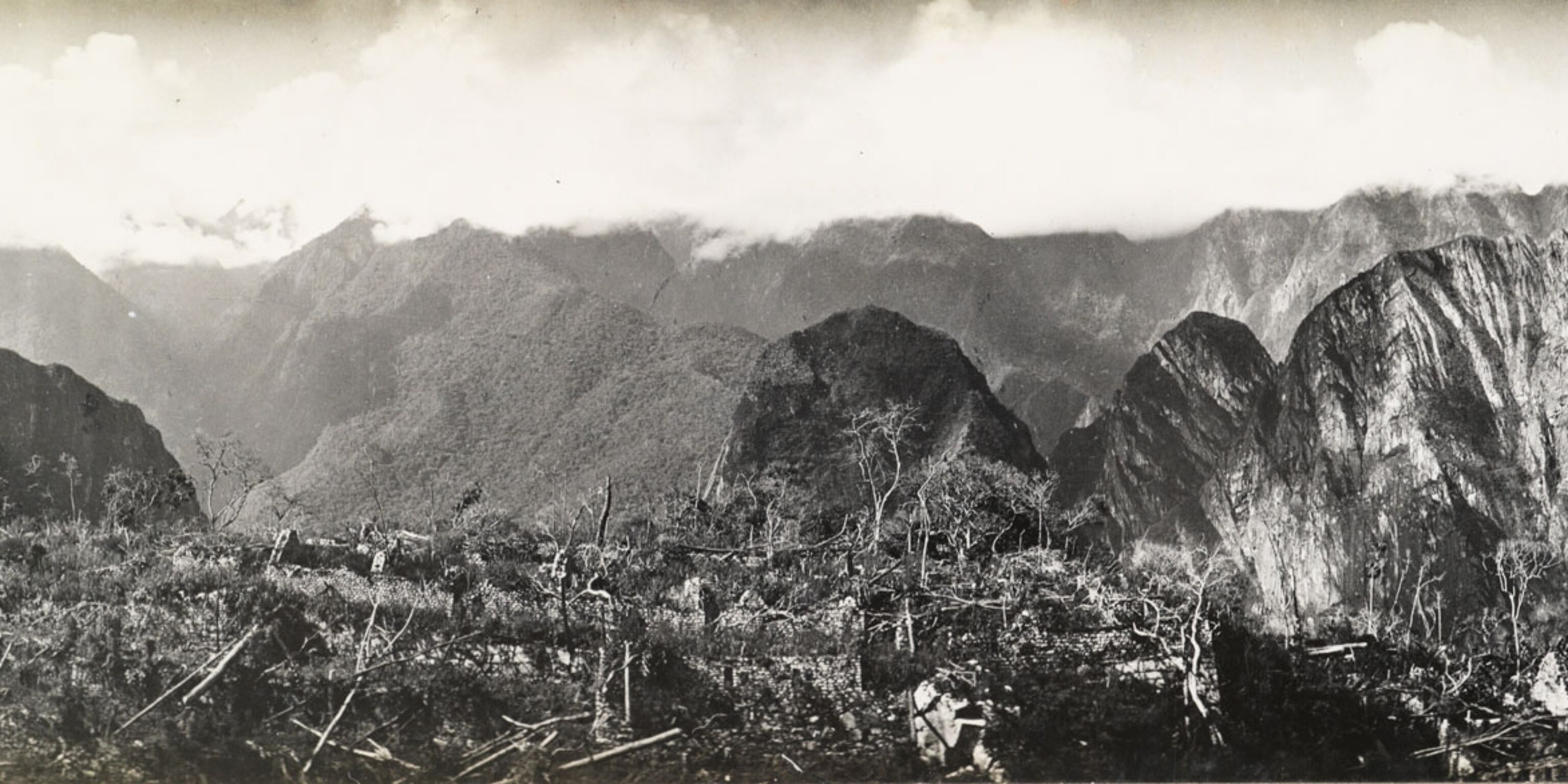





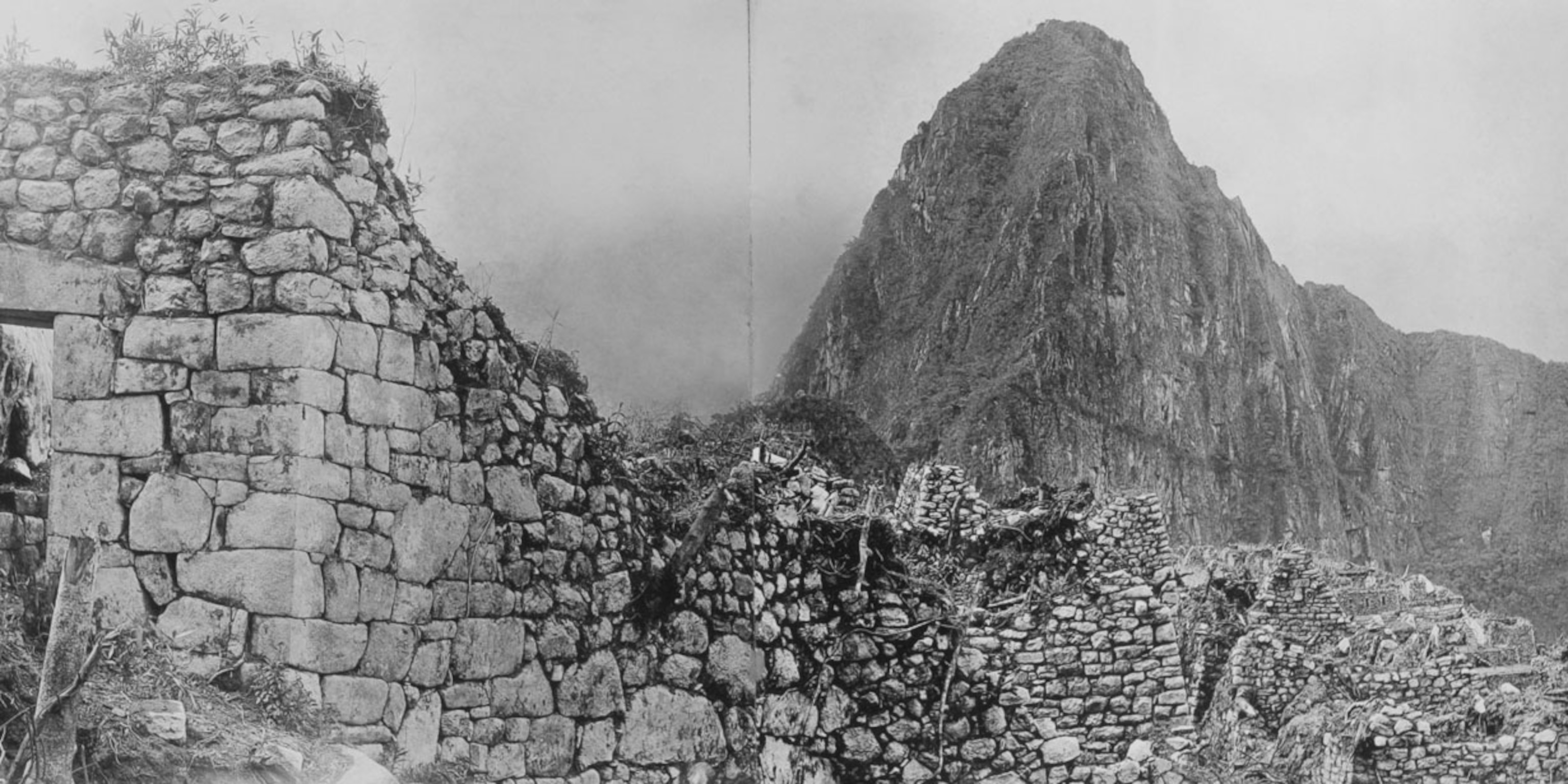
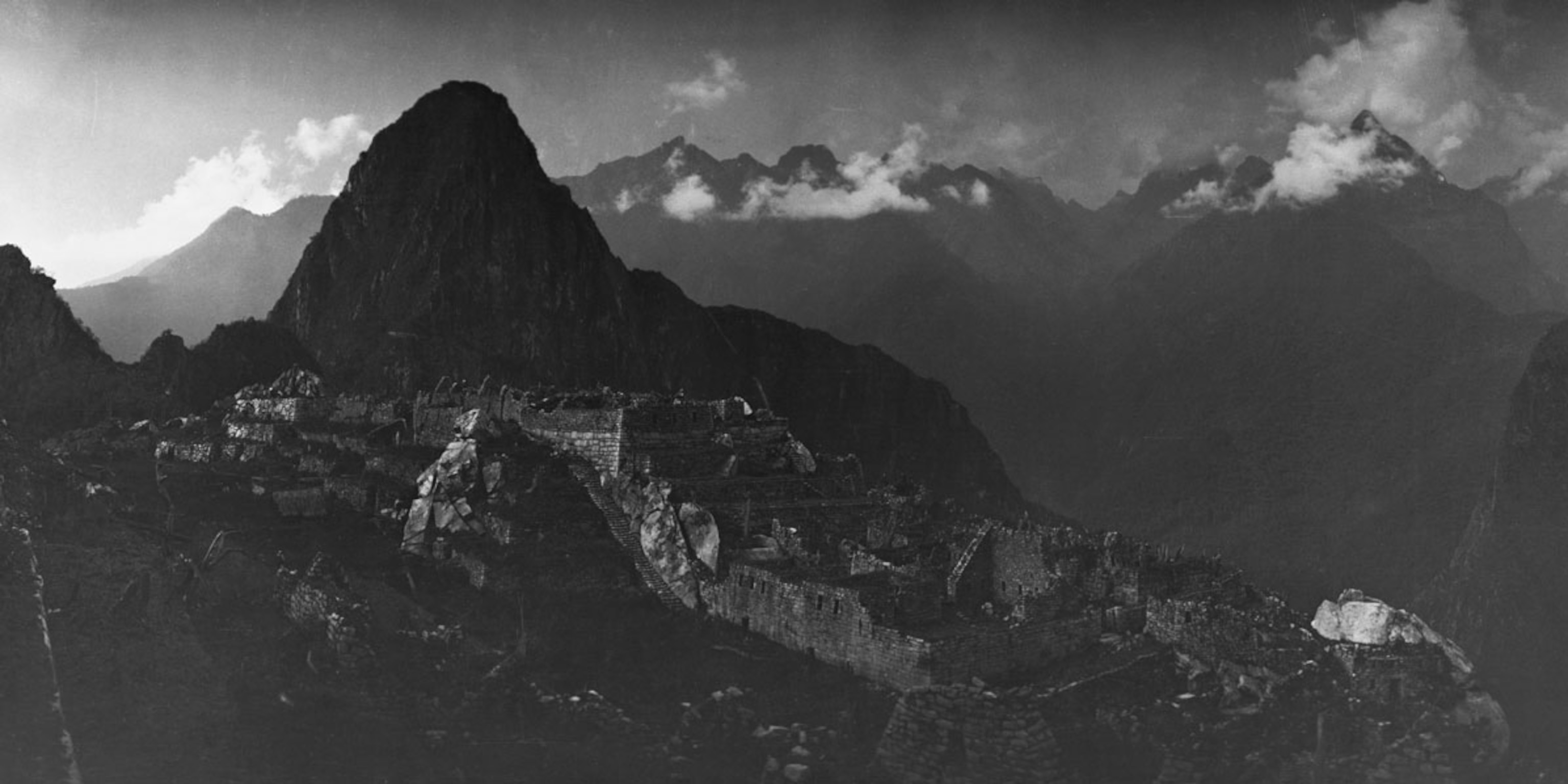
These Stunning Pictures Revealed Machu Picchu to the World
In 1913, National Geographic published these panoramas of the ancient city, rediscovered two years before.
One hundred and six years ago today, while searching for a lost Incan capital, a 35-year-old American explorer named Hiram Bingham was led to a mountaintop in the Urubamba valley of Peru. The area he entered resembled a tropical rainforest, but soon he began to make out walls and buildings. The granite blocks "were beautifully fitted together in the most refined style of Inca architecture," he recalled two years later in an account for National Geographic. As the scale of the 400-year-old site unfolded, Bingham realized that "Machu Picchu might prove to be the largest and most important ruin discovered in South America since the days of the Spanish conquest."
Before departing from the mountain and the unearthed ruins that would make him famous, Bingham spent four hours documenting Machu Picchu with a special Kodak camera. "Would anyone believe what I had found?" he later said. "Fortunately, in this land where accuracy of reporting what one has seen is not a prevailing characteristic of travelers, I had a good camera and the sun was shining."
Bingham had acquired such a camera through a relationship he'd struck up with George Eastman, the creator of Kodak. The panoramic version of that camera wouldn't come out for a decade, but Eastman provided it, along with free equipment and film for his expeditions. In return, Bingham reported back on the ability of Kodak's film to withstand and be developed in tropical regions. The panoramas in the gallery above were likely taken on a Kodak 3A camera that had been specially retrofitted to take 120-degree panoramas, says National Geographic photo archivist Sara Manco.
Bingham, of course, was not the first person to discover Machu Picchu. Peruvian farmers in the region had long known about and visited the mountaintop ruins. But he was likely the first to make a photographic record of the site. Believing that photographs were as valuable as taking research notes, he insisted that his expedition teammates learn how to shoot and develop film before each trip. On his next trip to Peru, in 1912, Bingham requested even more equipment—three special Kodak cameras, 3,500 negatives to shoot on, and at least 10 wooden tripods. These documented the excavation of ruins, sometimes including Bingham or his teammates to show scale.
Another man of that era recognized the power of photography to legitimize and popularize science. National Geographic Editor Gilbert Grosvenor courted Bingham and the result was a lengthy account and 244 photographs of the 1911 Peru expedition published as a single-article issue in 1913. The images were also exhibited at the National Geographic Society in Washington, D.C. The Society later funded half of his second Peru expedition, and he and Grosvenor became friends. Early on, Grosvenor recognized the historic importance of Bingham's work and offered some advice to the headstrong explorer. In their correspondence, he told Bingham not to work too hard, insult the Peruvian government, and, most importantly, do "anything that will detract from the brilliance of your Machu Picchu discovery. This discovery will loom larger every successive year."
Bingham's famous story "In the Wonderland of Peru" was published in our April 1913 issue. Read it with Nat Geo PLUS, subscribing members' all-access pass to the archive and more.
Related Topics
You May Also Like
Go Further
Animals
- What La Palma's 'lava tubes' tell us about life on other planetsWhat La Palma's 'lava tubes' tell us about life on other planets
- This fungus turns cicadas into zombies who procreate—then dieThis fungus turns cicadas into zombies who procreate—then die
- How can we protect grizzlies from their biggest threat—trains?How can we protect grizzlies from their biggest threat—trains?
- This ‘saber-toothed’ salmon wasn’t quite what we thoughtThis ‘saber-toothed’ salmon wasn’t quite what we thought
- Why this rhino-zebra friendship makes perfect senseWhy this rhino-zebra friendship makes perfect sense
Environment
- What La Palma's 'lava tubes' tell us about life on other planetsWhat La Palma's 'lava tubes' tell us about life on other planets
- How fungi form ‘fairy rings’ and inspire superstitionsHow fungi form ‘fairy rings’ and inspire superstitions
- Your favorite foods may not taste the same in the future. Here's why.Your favorite foods may not taste the same in the future. Here's why.
- Are the Great Lakes the key to solving America’s emissions conundrum?Are the Great Lakes the key to solving America’s emissions conundrum?
- The world’s historic sites face climate change. Can Petra lead the way?The world’s historic sites face climate change. Can Petra lead the way?
History & Culture
- Hawaii's Lei Day is about so much more than flowersHawaii's Lei Day is about so much more than flowers
- When treasure hunters find artifacts, who gets to keep them?When treasure hunters find artifacts, who gets to keep them?
- Meet the original members of the tortured poets departmentMeet the original members of the tortured poets department
- When America's first ladies brought séances to the White HouseWhen America's first ladies brought séances to the White House
Science
- Should you be concerned about bird flu in your milk?Should you be concerned about bird flu in your milk?
- Here's how astronomers found one of the rarest phenomenons in spaceHere's how astronomers found one of the rarest phenomenons in space
Travel
- Are Italy's 'problem bears' a danger to travellers?Are Italy's 'problem bears' a danger to travellers?
- How to navigate Nantes’ arts and culture scene
- Paid Content
How to navigate Nantes’ arts and culture scene - This striking city is home to some of Spain's most stylish hotelsThis striking city is home to some of Spain's most stylish hotels
- Photo story: a water-borne adventure into fragile AntarcticaPhoto story: a water-borne adventure into fragile Antarctica
